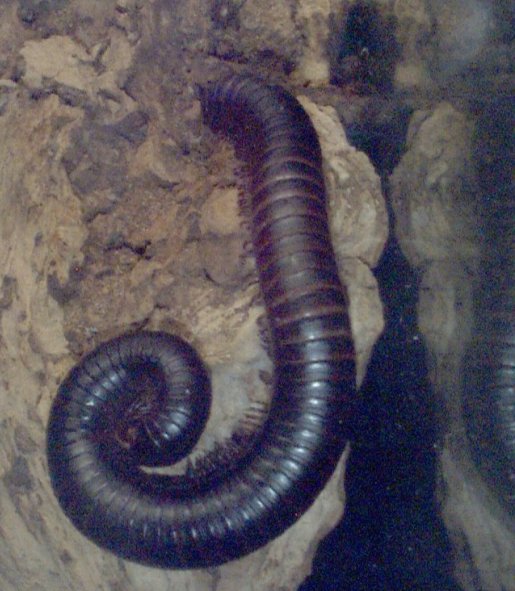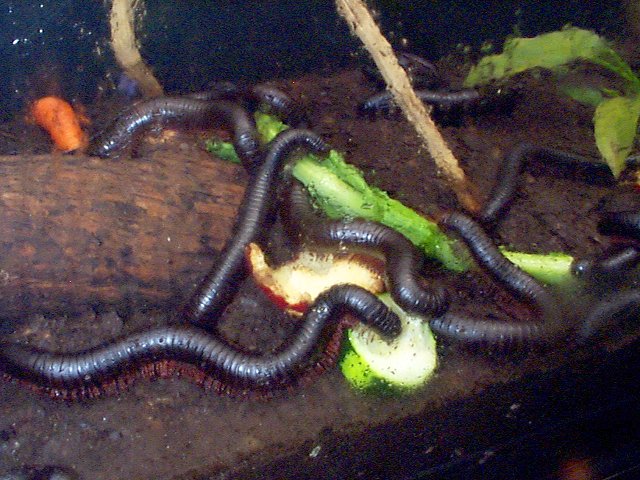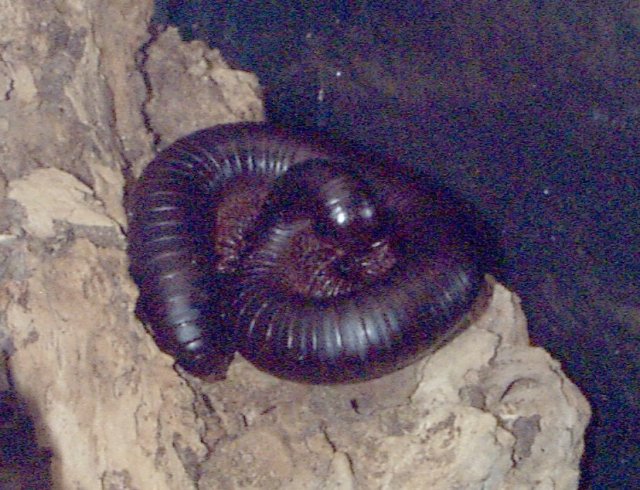| General information:
There seems to be disagreement about the correct
scientific name for giant African millipedes. Dr. Richard Hoffman
of the Virginia Museum of Natural History is the man who identified it.
He identified it just before the first World War and, back then, people
did not make distinctions between holotypes (the original references species
associated with the name), allotypes (a reference species of the sex opposite
to that of the holotype) , and paratypes (additional specimens used to
represent the species). The "giant African millipede" is variously
identified as Scaphiostreptus spp, Lules spp. and Archispirostreptus species.
Identification of the species of a particular millipede often depends on
the location from which it was collected. The animals at the Fort
Worth Zoo have been assigned to the genus Archispirostreptus. |


